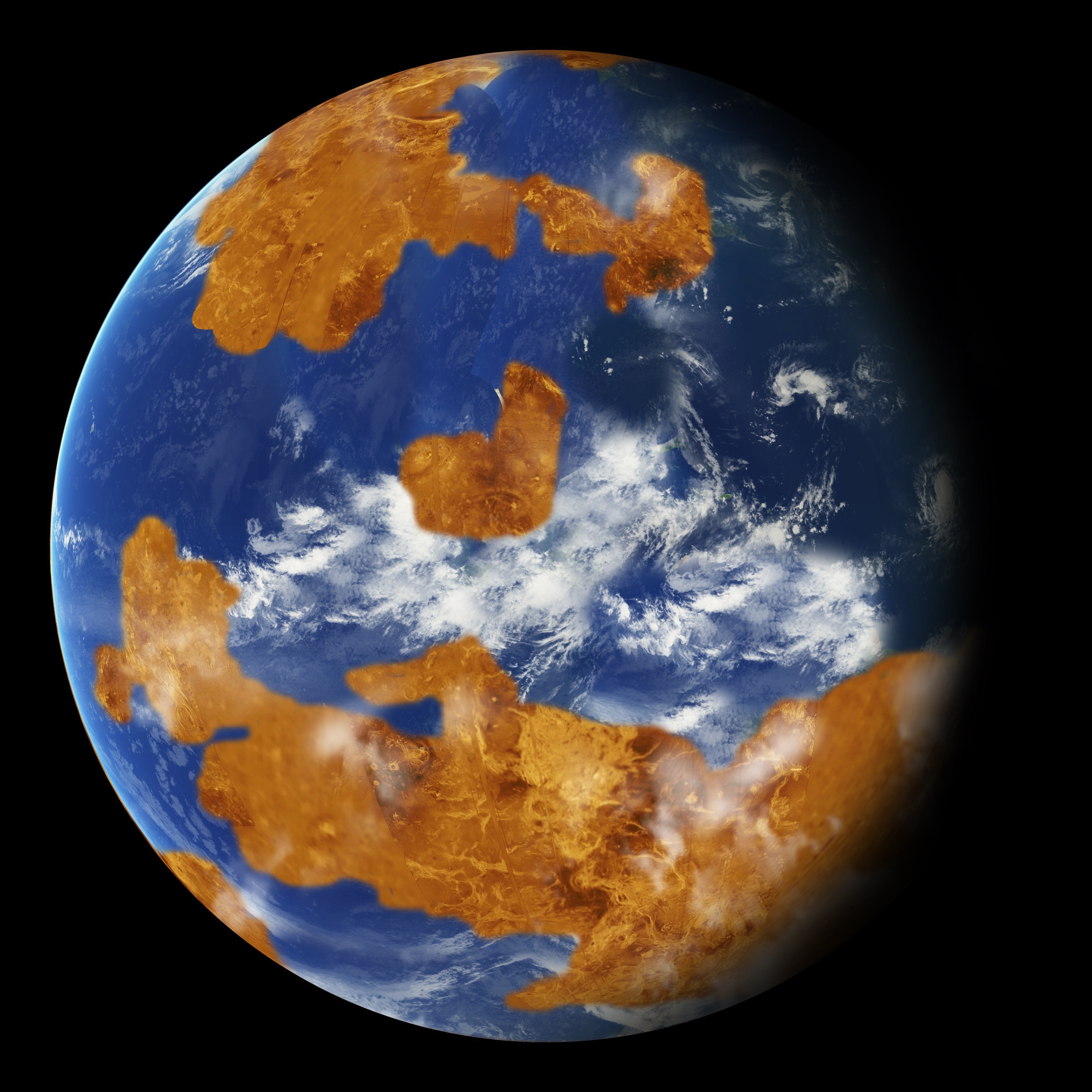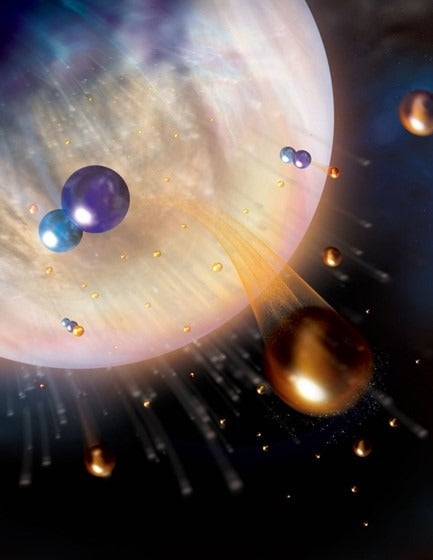
Venus and Earth really weren’t so different, once upon a time. Researchers believe that they might’ve formed from the same nebulosity around the same time. And that Venus once held about the ocean’s worth of water reserves. At some point, Venus’s climate descended into a hellscape while Earth became the cradle of life we know today.
So, what happened? Why did Venus lose the water that once made it so Earth-like?
A new study published in Nature could provide a vital pathway toward understanding this water loss, through a process known as dissociative recombination. This process breaks hydrogen-bearing molecules apart, where the hydrogen atom is either sent away or goes off into space, never to return. This leaves behind a lot of carbon and oxygen, which likely formed the planet’s atmosphere we know of today, dominated by carbon dioxide.
Venus’s early atmosphere had an abundance of HCO+, (or a molecule with hydrogen, carbon, and ionized oxygen), especially in the ionosphere, where the molecules had a lot of free-roaming electrons. These electrons were able to split apart the molecules by reacting with the ionized oxygen and exciting the hydrogen with plenty “of excess energy, much more than it needs to escape from Venus to space,” according to study lead author Michael Chaffin, a research scientist at the University of Colorado Boulder.
The process of elimination
To understand how this led to the water loss of Venus, it’s important to know where the HCO+ came from. In the atmosphere of ancient Venus, there was still an abundance of carbon dioxide, but water was also present. Scientists still aren’t certain if the water content was enough to form into oceans, or if early Venus was bathed in steam. The ultraviolet radiation from the sunlight breaks down both the carbon dioxide and the water into electrically charged atoms. The “free” atoms then form HCO+, completing the dissociative recombination process.

And, unfortunately for any potential life on Venus, once those molecules are broken apart, most of the hydrogen is lost forever, leading to an excess of carbon dioxide in the atmosphere and a scarcity of water vapor. This directly results in the runaway greenhouse effect. crowning Venus as the hottest planet in our Solar System — despite being only the second closest to the Sun.
It’s estimated to have only taken about 125 million years to complete the runaway greenhouse effect process, a blink of an eye on the geologic timescale. “… [what] we discovered in this paper is more important than any other process that’s been studied in the past,” Chaffin says. “It almost doubles the loss rate of water to space today from the Venus system to space and this halves the time it takes to decrease the water in the atmosphere by some amount.”
The ‘million-dollar question’
But the exact timing of this isn’t known. As Chaffin puts it, the “million-dollar question in Venus science right now is, ‘When did Venus stop being Earth-like?’” As mentioned, scientists aren’t sure if Venus’s water ever actually became oceans or if it stayed as a sort of steam. A pair of upcoming Venus NASA probes: Deep Atmosphere Venus Investigation of Noble gases, Chemistry, and Imaging (DAVINCI) and Venus Emissivity, Radio science, InSAR, Topography, and Spectroscopy (VERITAS), could answer this question by looking for signs of past oceans in the topography.
If the water never condensed into oceans, Venus could have started losing water soon after its formation due to its closer proximity to the Sun, something that didn’t happen to Earth when its water was just as steamy. But if Venus did contain oceans, the planet probably had a more stable atmosphere, and thus, some kind of cataclysm may have vaporized its oceans and allowed for all that water loss.
“The story may boil down to that Venus is just exposed to more intense sunlight, but exactly when, between Earth and Venus, you end up with a Venus-like or an Earth-like planet is a big open question, and that has implications for understanding whether Earth-sized or Venus-sized planets orbiting other stars are more similar to Earth or Venus,” Chaffin says. This is also to say that just because a planet is the same size as Earth and is potentially located within the habitable zone of its host star (Venus, Earth, and Mars are all technically in the habitable zone of the Sun), doesn’t mean it hasn’t suffered the same fate as Venus.
After all, it could be done by a massive collision with another body, or even by the more subtle machinations of its own star.









